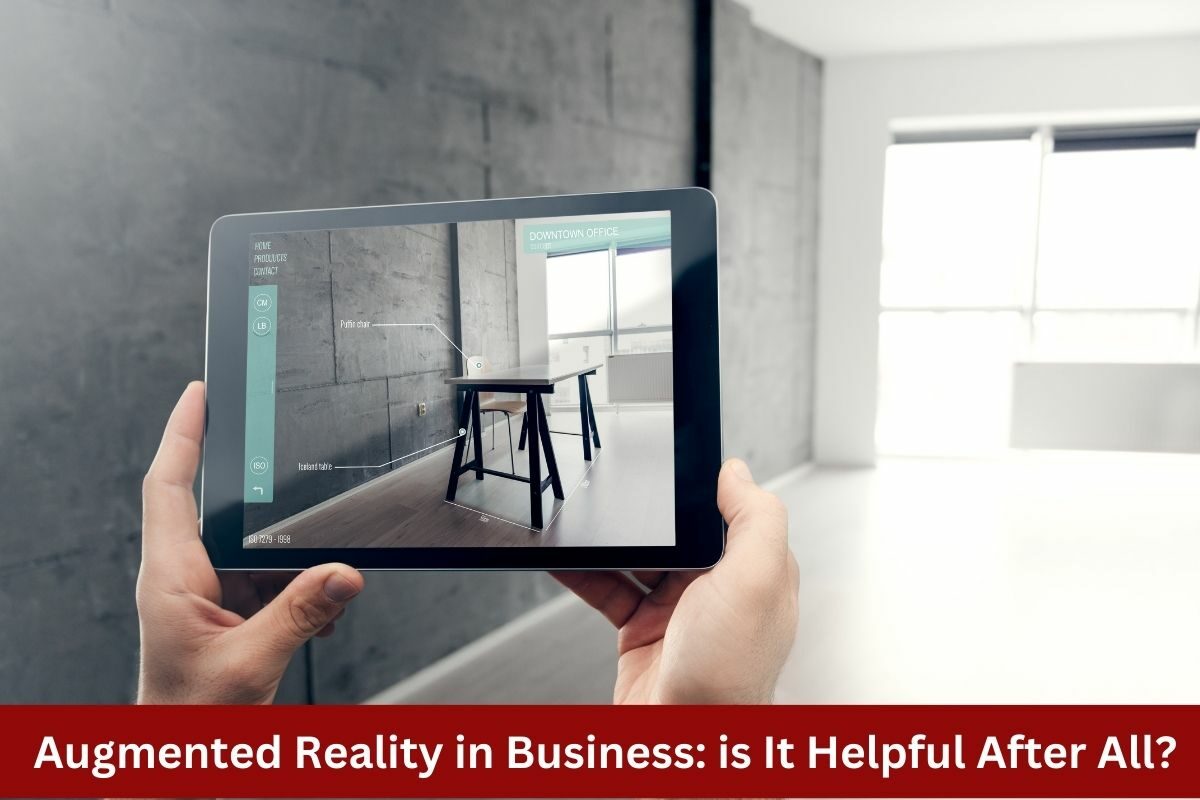The business industry has been at the forefront of massive technology adoption for years. Some did not prove helpful, while others have taken brands to a new level. This latter case relates to Augmented Reality. Let’s take a closer look at what AR is and define its strengths and weaknesses and, above all else, the future.
What is Augmented Reality?
Augmented Reality is a technology that projects virtual objects on real-world images. The history of Augmented Reality is relatively short, with the first AR system developed in the early 1990s. However, the technology has seen significant advancements recently, with many high-profile AR applications released in the past few years. Some examples of AR applications include the following:
- A mobile app that layers virtual objects onto our environment
- A heads-up display in a car that provides information about the surroundings
- A pair of glasses that provide a real-time translation of a foreign language
What are the benefits of Augmented Reality in business?
There are many potential benefits of Augmented Reality in business. Some of these benefits include:
- Increased efficiency and accuracy: AR can help employees work more efficiently and accurately. For example, if workers assemble a product, they can use AR to see exactly where each component needs to go. It can help eliminate errors and double productivity.
- Enhanced customer experiences: AR can also bolster customer experiences. For example, retailers can use AR to let customers “try on” clothes or makeup before purchasing. Use VistaCreate for creating your original tickets.
- Improved education and training: AR is widely used to improve training and education for employees or customers. Companies adopt AR technology to provide step-by-step instructions for complex tasks.
- Greater marketing and advertising opportunities: AR can create new opportunities for marketing and advertising. Brands use AR to create interactive experiences that draw attention to their products or services.
- Increased safety: AR has improved safety in some workplaces while having a brief history of use. For example, it provides visual cues or warnings to workers in hazardous environments.
By harnessing the power of AR, companies can improve efficiency, enhance customer experiences, and create new opportunities for marketing and advertising.
Are there any snags to using Augmented Reality in business?
Nothing is perfect, including AR. If not used properly, AR can decrease productivity by distracting workers from their tasks. Additionally, implementing the technology can be expensive and may require special hardware or software. And there is always the potential for technical glitches that can interfere with the proper functioning of AR applications.
How can businesses make the most of Augmented Reality?
Companies can effectively utilize AR in numerous ways. One way is to use AR to create an immersive experience for customers. It could involve utilizing AR to create a virtual showroom for products or to allow customers to experience a product without buying it first.
Another way involves the improvement of business operations. For example, AR is helpful when training employees to use new equipment or products. Employees also confirm that AR is effective with tasks such as assembly line work and providing real-time instructions or information to workers.
Finally, innovative businesses use AR as a marketing tool. Companies create AR experiences that enable potential customers to interact with their products fun and engagingly. The reports are that this tactic helps increase brand awareness and interest in a product.
Examples of companies profiting from implementing AR
Apple is one of the most well-known companies profiting from implementing AR. Their use of ARKit has allowed them to create many successful AR apps, including Pokémon GO, which was a smash hit when it launched in 2016.
The furniture retailer IKEA is another brand profiting from AR. It has developed an app that allows users to see how furniture would look in their homes before making a purchase. It is an excellent use of AR that can save customers time and money by letting them make informed decisions.
Other companies profiting from AR include Google, which has developed the Tango platform for AR development, and Facebook, which acquired the Oculus Rift virtual reality headset to develop it further for AR applications.
What does the future hold for Augmented Reality in business?
The future of AR in business is still being written. However, the potential applications are vast, and smaller brands are already starting to explore how AR can be used to improve their operations, better serve their customers, and create new experiences.
One obvious application of AR is in businesses that rely on face-to-face customer interactions, such as retail stores, restaurants, hotels, and museums. AR can improve the customer experience by providing information about products or services without the customer asking. For example, a client looking at a piece of jewelry in a store could see information about the piece displayed right in front of them. Or in a restaurant, seeing nutritional details about the dishes being served.
Conclusion
Augmented Reality is a relatively new technology gaining resonance among brands, and for a good reason. Besides countless advantages, there are endless possibilities for how businesses can use AR. The potential applications will only become more exciting and diverse as the technology develops.
